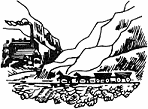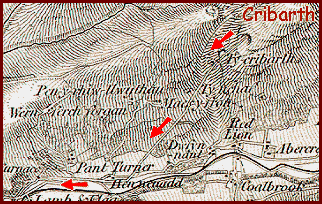A horse hitched to small trucks or
trams running on
iron rails could pull much more weight than a horse pulling
a cart over bumpy ground. From this simple fact the tramroads,
and later the railways, developed.
(For more background information on tramroads visit the Transport
topic section).

